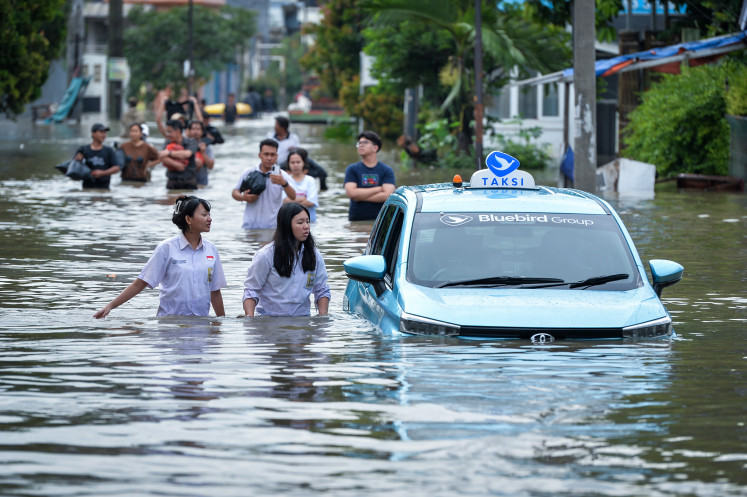Popular Reads
Top Results
Can't find what you're looking for?
View all search resultsPopular Reads
Top Results
Can't find what you're looking for?
View all search results‘Bright Indonesia’ marches on after budget, political hiccups
After months of delays, the Energy and Mineral Resources Ministry has finally taken the first step toward realizing its Indonesia Terang (Bright Indonesia) program, under which it is planning to electrify thousands of remote villages by 2019
Change text size
Gift Premium Articles
to Anyone
A
fter months of delays, the Energy and Mineral Resources Ministry has finally taken the first step toward realizing its Indonesia Terang (Bright Indonesia) program, under which it is planning to electrify thousands of remote villages by 2019.
The ministry’s new and renewable energy director general, Rida Mulyana, said on Tuesday that the ministry and state-owned electricity company PLN had been working to jointly map out electricity needs in Papua and West Papua provinces in an effort to realize the project.
The mapping, he said, would help both entities set priorities in the procurement of electricity in the easternmost provinces.
“We have done a lot of studies and held discussions with PLN in both provinces. After the mapping, we will immediately procure electricity there,” he said.
Through the program, the ministry expects to electrify 12,659 remote villages, mostly in eastern Indonesia, through new and renewable energy sources.
Aside from Papua and West Papua, electricity will be procured for Maluku, West Maluku, East Nusa Tenggara and West Nusa Tenggara, as stipulated in the latest plan.
The program was previously stalled for months due to budget cuts in the revised 2016 state budget, as well as a Cabinet shake-up, which saw a change in energy and mineral resources minister from Sudirman Said to Arcandra Tahar and later Ignasius Jonan.
While working for Papua and West Papua, Rida said the ministry and PLN were also studying other provinces as previously planned for the Indonesia Terang program.
Currently, Papua’s electrification ratio is only 45.93 percent while West Papua’s is 82.7 percent.
To electrify remote villages in Papua and West Papua, the government will need a total investment of Rp 156.02 billion (US$11.92 million) and annual operating fees of Rp 191.9 billion.
“Some 99.9 percent of residents in Bangka Belitung [province] have access to electricity, while Jakarta has 98 percent. Papua and West Papua will match them by the end of next year,” Rida said.
The Indonesia Terang program was first established under the command of former energy and mineral resources minister Sudirman, but it stalled after he was replaced by Arcandra.
Arcandra, however, was dismissed from his position after less than a month following public controversy about his US citizenship.
Last month, President Joko “Jokowi” Widodo inaugurated former transportation minister Jonan to lead the ministry, with Arcandra serving as his deputy.
The revised 2016 state budget has also hampered the Indonesia Terang program as Rida’s directorate general, which is directly responsible for the program, has been left with Rp 1.7 trillion from the Rp 2.1 trillion originally stipulated.
However, Jonan has pledged that he will continue the program.
Institute for Essential Services Reform (IESR) executive director Fabby Tumiwa previously criticized the major budget cut at the Directorate General of New and Renewable Energy, suggesting that the sector was still under-utilized in comparison with more traditional energy sources.
Fabby explained that the budget cut may hamper priority projects like Indonesia Terang and went against the government’s ambitious plan to boost the national electrification ratio.
“This budget cut may give a negative signal to business players, investors and development partners about the government’s commitment to develop and conserve new and renewable energy,” he said.
Previously, the plan to procure electricity in Papua and West Papua was solely executed by PLN, separate from the Indonesia Terang program.
However, PLN and the ministry synergized their efforts because they were working toward the same objectives — procuring electricity in the provinces through new and renewable energy resources.
The government also has another major electricity project, its 35,000 megawatt (MW) electricity procurement plan, but Rida said the program was focused on Java. (adt, hwa)










